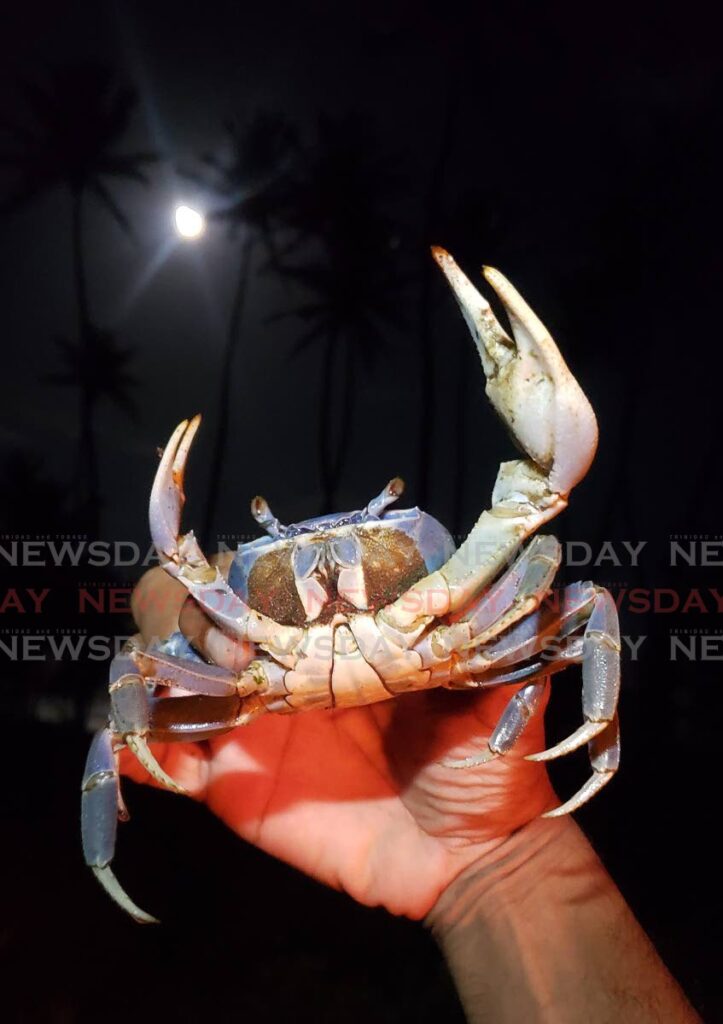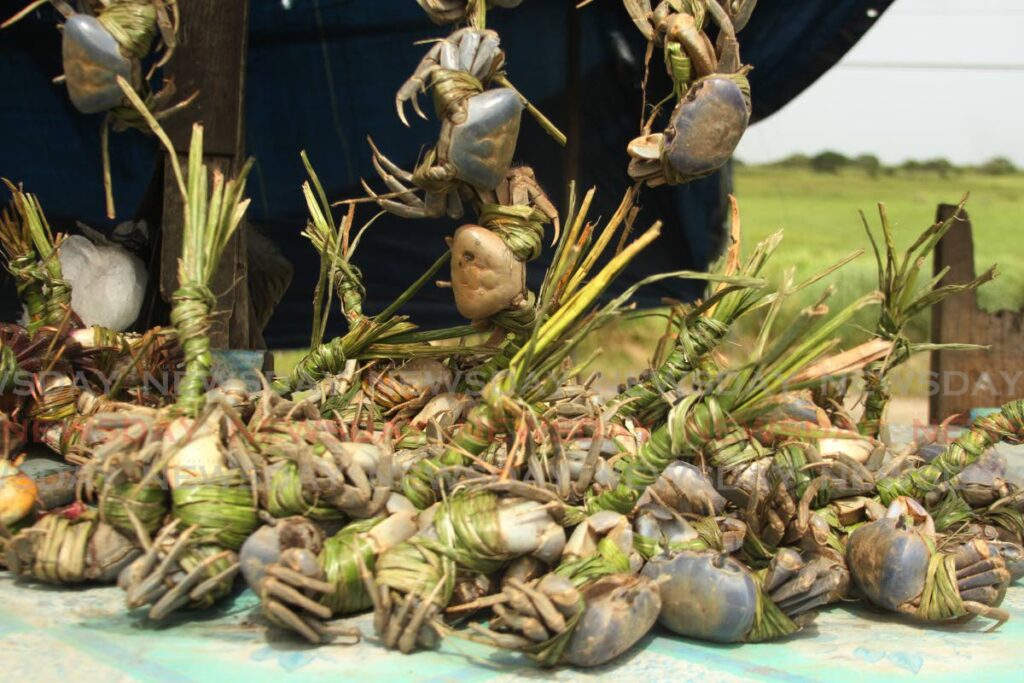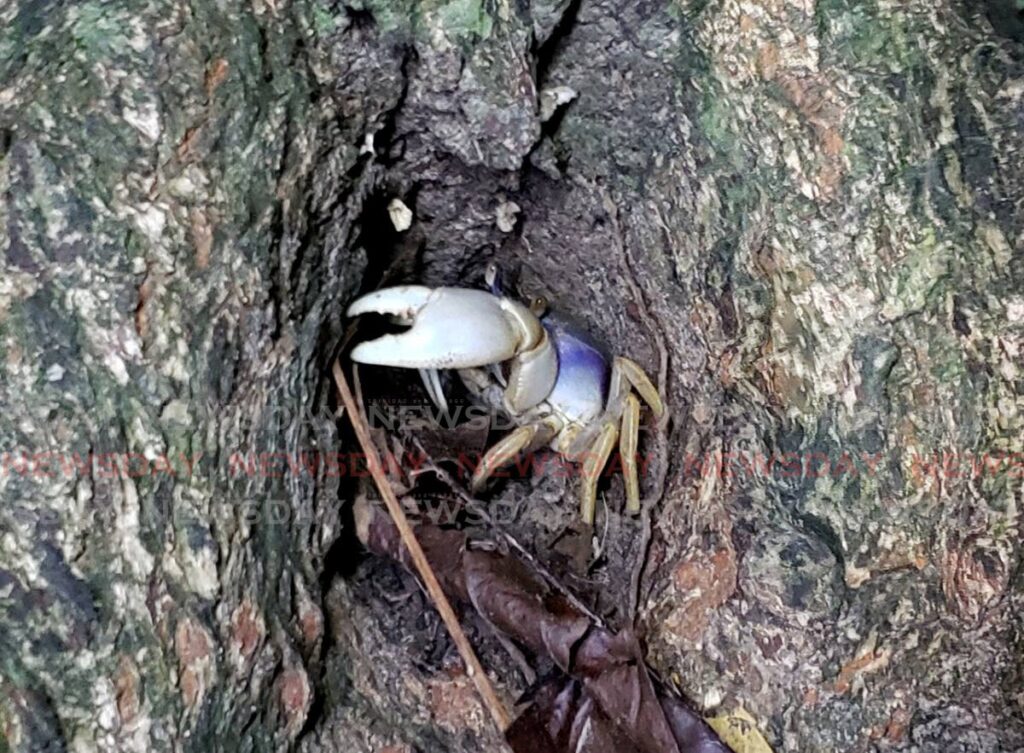Why blue crabs come out on full moon nights

Starting from the earliest days of civilisation to today’s modern society crabs have been hunted for their meat, which is considered an easy and accessible source of protein.
So it's not surprising that blue crabs (Cardisoma guanhumi) are harvested in abundance in TT. But aquatic ecologist Dr Ryan Mohammed is concerned with the manner and rate at which these crabs are hunted.
He told Newsday Kids, “The fact that blue crabs are one of TT’s most common crabs put them high up on the list for consumption.
“They have been part of the Trinbagonian cultural diet for quite a while – crab and callaloo is viewed as a typical delicacy.
“So, unfortunately, because it is viewed as one of our culturally acceptable dishes, it also puts the crabs high up on the list of what is extracted from the wild.”
While they are known as blue crabs, Mohammed explained that they aren’t always blue.
“In different Caribbean islands they can vary (in colour) from purple to light blue to grey, to greyish-brown but the predominant colour is blue.
“One reason for their colour variation is age, so greyer ones may be older. Other reasons could be vegetation, habitat and diet but definitely age.”
And the colour isn’t the only thing that varies among blue crabs.
Researchers have observed that male blue crabs have larger claws – commonly known as gundies – in comparison to females.
“These claws, gundies, in males are really used for territorial defence as well as to make them more attractive to a female.

“When they are trying to attract females, you see them doing a waving pattern with their large claws.”
Mohammed said the large, meaty claws is one of the things that attract people to hunting blue crabs.
Spending most of their life near the coast, he said, this is where the crabs are commonly found and hunted.
“Blue crabs, unlike a lot of the crab species that I have collected, have a mostly coastal terrestrial habitat preference.
“They spend a greater portion of their life in coastal nearshore areas...this means they are easily accessible.”

Some people may know that blue crabs come out of their burrows and head towards the ocean during moonlit nights but Mohammed said there’s a significant purpose for this behaviour.
As such, he is urging people to reconsider when they hunt them to ensure that their population is given a chance to survive.
“Typically, you hear people saying they are going to hunt blue crabs because 'crabs running.'”
“What that actually means is that if you go down on the Manzanilla stretch, you’ll see, around a full moon, these crabs would be trying to cross the main road.”
Mohammed said during a full moon, at certain times of the year, the female crabs go to the water's edge to shed eggs and the males join in to release semen to fertilise the eggs.
Once the eggs are fertilised in the water, they begin growing and the crabs spend the first stages of life freely swimming until they are ready to return to land.
“Fertilisation happens in the water and once this happens, you have thousands of these tiny baby crabs which form part of the planktonic composition in the coastal nearshore which means they are fed by everything.
“The crabs themselves perform an ecosystem function when they reproduce so that other animals can feed on their juveniles and support other fisheries.

“Now imagine humans taking up all of these crabs before they even get to complete that ecosystem service. That’s a major issue, people taking up these crabs before they reproduce.”
If people must catch crabs, Mohammed said, they must avoid catching those going to the water on moonlit nights. Instead, he urged them to harvest crabs that are returning to land.
Mohammed also wants people to learn the difference between male and female to allow female crabs the chance to reproduce properly.
“When you pick up a blue crab, that crab isn’t one or two years old. An adult blue crab, before it becomes sexually mature, is over four years old with a proper adult being as much as ten years old.
“People need to be aware of their practices, you can’t just go with a bag to pick up 100 crabs and think it’s a free for all because that’s not sustainable.”


Comments
"Why blue crabs come out on full moon nights"